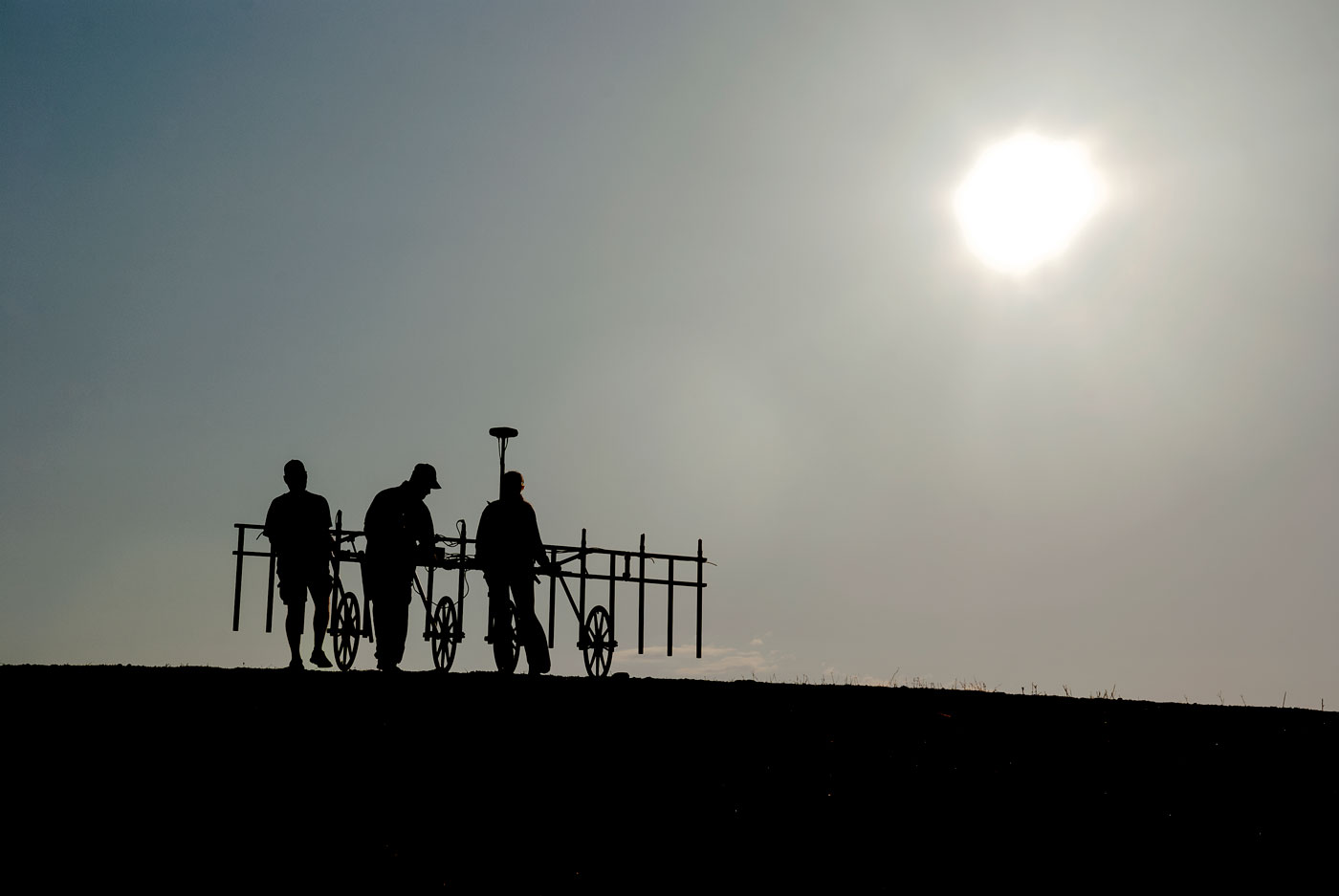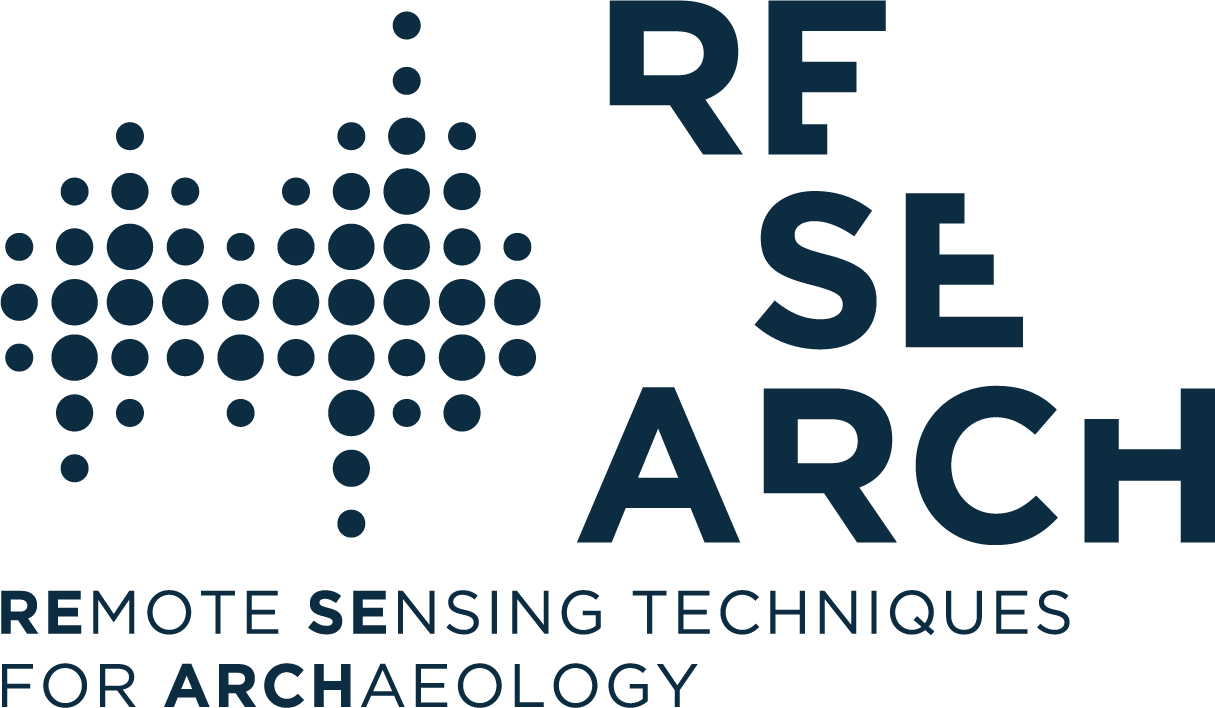
 Ground-based remote sensing techniques allow a non-invasive and non-destructive survey of objects, even on a large scale. Belongs to this family, geophysics and other techniques that can be applied on field, such as laser scanner.
Ground-based remote sensing techniques allow a non-invasive and non-destructive survey of objects, even on a large scale. Belongs to this family, geophysics and other techniques that can be applied on field, such as laser scanner.
Geophysical techniques are based on well-known physical principles of matter and are able, by measuring certain properties of soil composition and consistency, to detect buried archaeological objects, by identifying their contrast with the surrounding material. Depending on the type of property exploited, they are classified into magnetic, electrical and electromagnetic. Electrical techniques measure changes in the electrical conductivity of materials, while magnetic techniques measure changes in the magnetization of objects, i.e. magnetic susceptibility (which depends on the presence of ferrous substances in soil which are present in materials such as hematite, magnetite and maghemite, as well as in metal objects produced by man). Other techniques exploit the two principles and are therefore called electromagnetic.
Measurements are made with electronic instruments that usually use relative spatial references (X, Y, Z) and/or absolute geographical coordinates, using the Global Positioning System (GPS) technology, which may or may not be integrated. Although many instruments have been tested in the archaeological field, the most effective techniques, and therefore most frequently used, are magnetometry, resistivity and georadar. In all the cases, surveys are conducted through three main steps, that are data acquisition on field, data processing and interpretation.
Many factors need to be taken into account when planning geophysical surveys, regarding both the characteristics of the area and of the features that are expected to be found. In the first case, it is important to know, as instance, the geological context of the site (clay, sand, limestone, flint…) and the topography of the area; if the place is humid or dry and if this condition tends to be stable or seasonal; the land use of the area and whether there can be obstacles to the application of the instrumentation. In respect to the archaeological deposit, it can be of great help for the survey to forecast the kind of archaeological evidence that is expected to be found and the materials that might have been used for their construction, as well as the depth at which structures are expected to be found and how deep they could go. In general, it is also important to decide what level of detail is needed and if the survey will be integrated into a GIS platform.
Data processing is then another fundamental part of the analysis, needed for the interpretation of survey results. Several softwares are used to apply filters and gains to the signal, therefore improving the reading of the registered anomalies, and consequently facilitating data interpretation. Filters can be classified in temporal and spatial filters: the first ones are one-dimensional, that is they act on the single track regarding the temporal information and its amplitude; the second ones, two-dimensional, are able to act both vertically, in the dimension of time, and horizontally. The filtering possibilities change depending on the software used for data processing. For this reason, it is recommended to consult the single user manual on a case-by-case basis and to test the various filters available in order to avoid that their use could eliminate useful information and thus impoverish the final image.
In relation to the fact that the various instrumentations allow to detect different characteristics of the subsurface (magnetic, electrical), it may be appropriate and fruitful, whenever possible, to apply more than one technique and to compare the data obtained in order to integrate the results and to reach a more detailed interpretation of the context.
Today, geophysics represent a big resource in the planning of archaeological investigations, especially when they concern large areas, which can hardly be investigated entirely by stratigraphic excavation. In those cases, it often happens that it is the geophysics that provides the most useful data to have a broad knowledge of the study area.
Other remote sensing tools are today very useful for Archaeology. They do not belong to geophysics, but they have to be applied on site, therefore they can be included in ground-based techniques. Among those, the laser scanner is one of the most recent and promising tools for the detailed and accurate survey of objects. Laser scanning allows the creation of 3-dimensional models, through the acquisition of point clouds, that can provide valuable metric data and products such as cross sections through buildings and accurate terrain models of slight topographic features. This technique is used both in research, in order to produce accurate digital reproduction of features and artifacts, and in monitoring and preservation activities.
The increase availability of spaceborne sensors that can provide systematic optical and radar satellite images allows researchers to carried out landscape studies in wider scales.
Aerial photography became a fundamental tool in Archaeology, because it allows a wide and detailed observation of a territory, and the visibility of features that cannot be perceived and identify from the ground.


